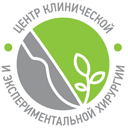V-lock thread
Da Vinci surgical system Laparoscopic approach in the treatment of recurrent genital prolapse. Redo promontofixation procedure.
Автор: Puchkov K.V.
Da Vinci surgical system Laparoscopic approach in the treatment of recurrent genital prolapse. Redo promontofixation procedure. Professor Puchkov K.V. is performing an operation (2019).
The film shows the technique of redo promontofixation procedure for genital prolapse III stage. In 2017, the patient underwent a robotic (da Vinci) hysterectomy without appendages and promontofixation with a mesh implant fixation to the anterior wall of the vagina. After 5 months, relapse developed. At the first stage, the pararectal space on the right was dissected with a 5 mm monopolar electrode and the dissection of the right lower hypogastric nerve. An excess mesh length was detected (stretching or inadequate selection of its length during the first operation). The fixation of the proximal edge to the promontory is reliable. In this regard, it was decided not to cut off its proximal part, but to cross the implant in the middle part. Next, lightweight promontofixation with a soft mesh implant MEDTRONIC COVIDIEN was performed according to the author's methodology (patent from 2015). The new implant was fixed to the distal part of the mesh in the area of the dome of the vagina and its proximal part, with adequate tension. The suture material was non-absorbable V-lock (MEDTRONIC COVIDIEN) and Prolen thread. Peritoneum was closed with Monocryl thread. The anterior and posterior colporrhaphy with levatoroplasty was also performed. The duration of the laparoscopic phase of the operation was 40 minutes. The patient was examined after 3 months, no complaints.
You can read about this technique in detail on the personal cite of Professor Puchkov Konstantin Viktorovich. To go to the link.
Extraperitoneal radical prostatectomy with pelvic lymphadenectomy for cancer of the prostate gland
Автор: Gallyamov E.A.
Extraperitoneal radical prostatectomy with pelvic lymphadenectomy for cancer of the prostate gland
Professor Gallyamov E.A. is performing an operation (2013).
In this video the technique of extraperitoneal radical prostatectomy with pelvic lymphadenectomy for cancer of the prostate gland is presented. The midline incision (the length is 3 cm) is done beneath the umbilicus, the anterior and posterior leaves of fascia of abdomival rectus muscle. A spacemaker is introduced into the preabdominal space, and the preabdominal space has been formed. A spacemaker is removed, and optic troacar is placed there. Under the visual guidance 4 working ports are established: three 5mm troacars, one 11 mm troacar. Symphysis, prostate, urinary bladder are visualized. Pelvic lymphadenectomy has been performed. Puboprostatic ligaments are transected, using Inseal Ethicon apparatus. The dorsal venous complex is exposed and stitched by “Vicryl” 1-0 thread. Detrusor fold is transected, intrapelvic fascia is opened, prostate pedicles are exposed, urethra is visualized. The urethra is transected by “cold” scissors with preserving narrow neck of urinary bladder. Deferent ducts are exposed along their length and are transected. Seminal vesicles are exposed, and are separated from tissues that are adjacent to prostate. Prostate pedicles are transected, using LigaSure apparatus. Prostate is mobilized along the posterior surface with opening Denonvillier’s fascia. Prostate apex is exposed. Dorsal venous complex is transected. The distal part of urethra is exposed. Urethra is transected by scissors. The prostate is placed into the container. Ureterocystoanastomosis has been formed by means of 2 threads V-lock 3-0 15 cm, using continuous suture. Whether anastomosis is hermetic or not, is checked by introducing 150 mL of saline solution into urinary bladder.





 Video of operations
Video of operations

